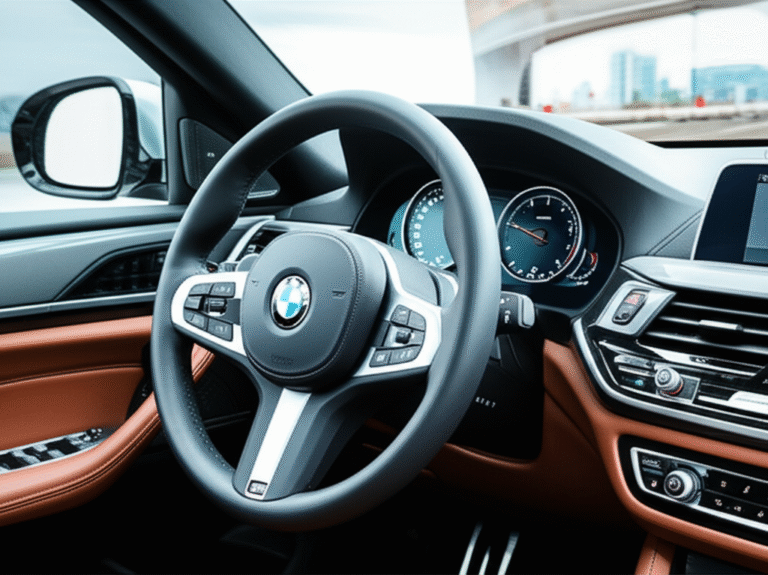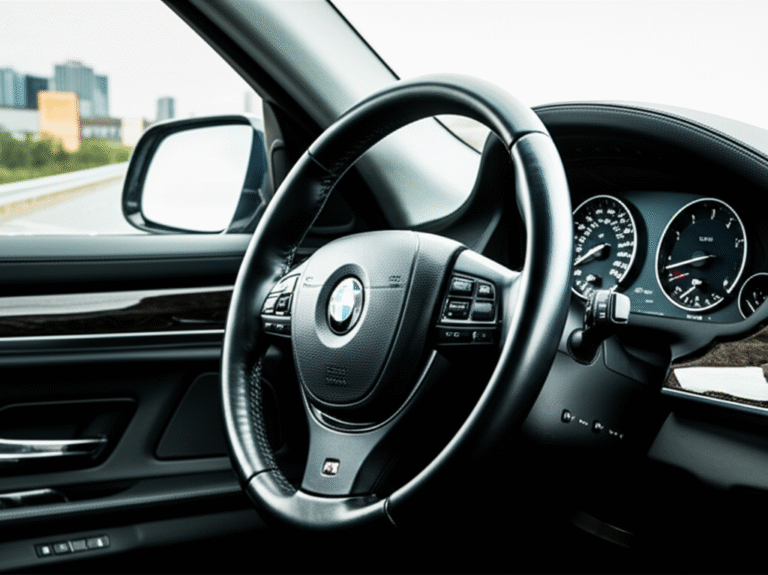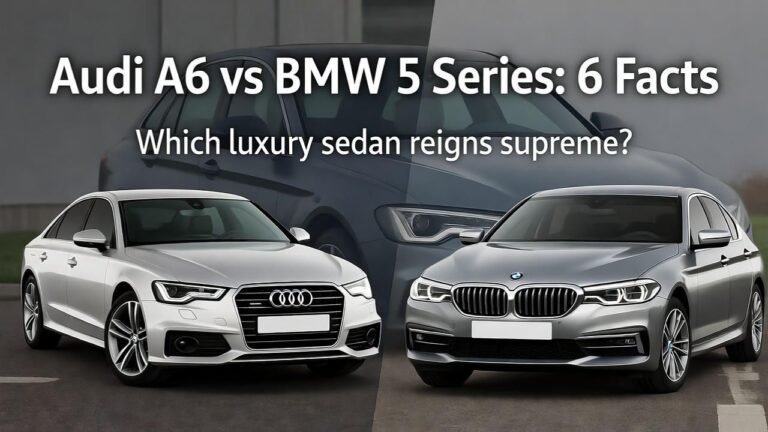2011 BMW 3 Series: 6 Insights You Must See
Unlock the secrets of the 2011 BMW 3 Series with 6 essential insights, making your ownership experience smarter and more enjoyable.
Key Takeaways
- Understand the 2011 3 Series’ legendary driving dynamics.
- Explore common maintenance needs for longevity.
- Discover tech features and their usability.
- Learn about engine options and their performance.
- Identify potential issues and their solutions.
- Appreciate the value and appeal of this iconic BMW.
The 2011 BMW 3 Series represents a pinnacle of automotive engineering, blending performance, luxury, and everyday practicality. If you’re considering buying one, or already own this exceptional vehicle, understanding its nuances is key. This guide will demystify the 2011 BMW 3 Series, offering insights that will enhance your ownership experience. We’ll cover everything from its celebrated driving feel to essential maintenance tips, ensuring you get the most from this classic. Prepare to delve into the details that make the 2011 3 Series a truly special car.
1. The “Ultimate Driving Machine” DNA: Experiencing the 2011 BMW 3 Series Ride
The 2011 BMW 3 Series, part of the E90/E92/E93 generation (sedan, coupe, convertible respectively), is renowned for embodying the brand’s “Ultimate Driving Machine” ethos. This isn’t just marketing; it’s a tangible experience felt the moment you take the wheel. The engineering focus on driver engagement is evident in several key areas.
Chassis and Suspension Tuning
BMW’s engineers meticulously tuned the chassis and suspension to offer a remarkable balance between sporty handling and comfortable ride quality. For the 2011 model year, the suspension systems, whether standard or optional sport packages, provided responsive steering and minimal body roll during spirited driving. If you enjoy a connected feel to the road – feeling what the tires are doing without being jarred by imperfections – the 2011 3 Series delivers.
Steering Precision
The hydraulic power steering system in most 2011 3 Series models is a highlight. Unlike many modern electric systems, it offers exceptional feedback and a satisfying weightiness. You can feel the road surface and the grip of the tires through the steering wheel. This direct connection allows for confident cornering and precise placement of the vehicle, a hallmark of classic BMW driving.
Rear-Wheel Drive Dynamics
While all-wheel drive (xDrive) was available, the rear-wheel-drive (RWD) configuration is the purest expression of the 3 Series’ driving DNA. RWD provides a balanced weight distribution and allows for a more engaging driving experience, especially when navigating winding roads or enjoying spirited acceleration. It contributes to the car’s natural handling characteristics and responsiveness.
Weight Distribution
The 2011 3 Series typically boasts a near 50/50 weight distribution. This near-perfect balance is crucial for predictable handling and agility. It means the car behaves consistently whether you’re accelerating, braking, or turning, making it feel stable and confidence-inspiring for drivers of all skill levels.
For enthusiasts interested in the finer points of BMW’s suspension design, resources like BimmerWorld offer insights into performance upgrades and OEM parts that maintain or enhance this celebrated driving dynamic.
2. Engine Options and Performance: Powering Your 2011 BMW 3 Series
The 2011 BMW 3 Series offered a range of potent and refined engines, each catering to different driving priorities. Understanding these options is crucial for picking the right car or appreciating the one you have.
The Iconic Inline-Six
BMW’s naturally aspirated inline-six engines are legendary for their smooth operation, linear power delivery, and distinctive sound. In the 2011 3 Series, you’d primarily find:
- 328i: Featuring the N52B30 engine, a 3.0-liter inline-six producing around 230 horsepower. This engine provides a robust blend of performance and efficiency for everyday driving.
- 330i (in some markets or earlier E90 production): A slightly higher-tuned version of the 3.0-liter, offering a bit more power.
These engines are known for their durability and engaging power delivery, making them a favorite among driving enthusiasts.
The Potent Twin-Turbocharged Six
For those seeking more exhilaration, the turbocharged options were a significant step up:
- 335i: Equipped with the N55B30 engine (a single-turbo evolution from the earlier N54 twin-turbo), this 3.0-liter inline-six delivered approximately 300 horsepower and a substantial torque boost. This engine offered exhilarating acceleration and a more aggressive performance feel.
The N55, while still potent, is generally considered more reliable and easier to maintain than its predecessor, the N54.
The Efficient Four-Cylinder
In certain markets and configurations, BMW also offered a four-cylinder engine:
- 320i/318i (depending on market prevalence): These models typically used a 2.0-liter four-cylinder engine. While less powerful, they offered better fuel economy and a more accessible entry point into the 3 Series ownership.
Transmission Choices
The 2011 3 Series was available with either a precise 6-speed manual transmission or a smooth 6-speed automatic transmission (Steptronic with paddle shifters in some models). The manual offers the most direct driver connection, while the Steptronic provides the convenience of an automatic with the option for driver-controlled shifting.
Resource recommendation: For a deeper dive into BMW engine codes and specifications, enthusiast forums like Bimmerpost often have detailed technical discussions.
3. Interior Comfort and Technology: Inside the 2011 BMW 3 Series Cabin
While the 2011 3 Series is praised for its driving dynamics, its interior offers a refined and technologically advanced environment for its time. BMW’s focus on driver-centric design is evident, creating a cabin that is both functional and luxurious.
Ergonomics and Materials
The cabin design prioritizes the driver. Controls are logically placed and easy to reach. Materials used throughout the interior are of high quality, with soft-touch plastics, supportive leather seats, and tasteful trim options (like brushed aluminum or wood grain). This contributes to a premium feel that has largely held up well over the years.
Infotainment and Navigation
The 2011 model year featured BMW’s iDrive infotainment system. Depending on the specific options chosen, this could include:
- Navigation System Professional: Offering detailed maps, traffic information, and route planning.
- Bluetooth Connectivity: For hands-free calling and audio streaming.
- USB Integration: Allowing for music playback from external devices.
- Auxiliary Audio Input: A universal standard for connecting music players.
While the graphics and processing speed may seem dated compared to today’s systems, the iDrive in the 2011 3 Series was intuitive once you became familiar with its menu structure, controlled by a central rotary dial and accompanying buttons.
Comfort and Practicality
Seats are designed for long-distance comfort, offering excellent support. The sedan and coupe models provide adequate space for front passengers, with rear seating being more accommodating in the sedan. Convertible models offered a unique open-air experience, though rear space is typically more limited. Storage solutions, like door pockets and a reasonably sized glovebox, add to the everyday usability.
Advanced Features (Optional)
Depending on the trim and options, the 2011 3 Series could be equipped with:
- Heated and ventilated front seats
- Dual-zone automatic climate control
- Premium audio systems (e.g., Harman Kardon)
- Sunroof (standard on sedans, available on coupes)
For those looking to upgrade their older iDrive system or integrate modern smartphone features, companies like BimmerTech offer aftermarket solutions.
4. Maintenance and Reliability: Keeping Your 2011 BMW 3 Series Running Smoothly
Like any German luxury car, the 2011 BMW 3 Series benefits from diligent maintenance to ensure its longevity and continued performance. Understanding common maintenance items will help you budget and plan for ownership.
Key Maintenance Intervals
BMW typically recommended oil changes every 10,000 to 15,000 miles, often utilizing synthetic oil. Other crucial maintenance points include:
- Brake System: Regular inspection and replacement of brake pads and rotors.
- Cooling System: Checking coolant levels and hoses; coolant flushes are recommended periodically.
- Filters: Replacing engine air filters, cabin air filters, and fuel filters as per the service schedule.
- Spark Plugs and Ignition Coils: These are wear items and typically require replacement around 60,000 to 100,000 miles, depending on the engine.
Common Issues and Considerations
While generally reliable, some common issues can arise with the E90 generation as they age:
- Oil Leaks: Valve cover gaskets and oil pan gaskets can degrade over time, leading to leaks.
- Water Pump and Thermostat: The electric water pump on later N55 engines and the thermostat can fail, leading to overheating.
- PCV System (Positive Crankcase Ventilation): The PCV valve and related hoses can clog or crack, affecting engine performance and potentially causing oil leaks.
- Turbocharger Issues (335i): While the N55 is more robust than the N54, turbochargers can still require attention at higher mileage.
- Fuel Injectors: Particularly on the earlier N54 engines (which might be found in some early 2011 models or 2010 models), fuel injectors could be a point of failure.
DIY vs. Professional Service
Many basic maintenance tasks, like oil changes and filter replacements, can be performed by a knowledgeable DIYer. However, for more complex jobs, especially those involving the engine, transmission, or diagnostic systems, it’s often best to seek out a reputable independent BMW specialist or a BMW dealership.
For official maintenance schedules and service information, consult your owner’s manual or the BMW USA website. For DIY guides, platforms like YouTube offer a wealth of visual tutorials.
Maintenance Cost Comparison
Here’s a general overview of typical maintenance costs compared to other segments:
| Component/Service | Estimated Cost (2011 BMW 3 Series) | Comparison (Average Car) | Comparison (Luxury Sedan) |
|---|---|---|---|
| Oil Change (Synthetic) | $100 – $200 | $50 – $100 | $120 – $250 |
| Brake Pads (Front) | $300 – $600 | $200 – $400 | $400 – $700 |
| Major Service (e.g., 60k miles) | $800 – $1500+ | $500 – $1000 | $1000 – $2000+ |
| Tires (Set of 4) | $800 – $1400 | $600 – $1000 | $900 – $1600 |
Note: Costs are estimates and can vary significantly based on location, shop rates, and specific parts used.
5. Popular Model Variants and Their Appeal
BMW offered the 3 Series in several distinct body styles for the 2011 model year, each appealing to different needs and preferences. Understanding these variants helps in identifying the perfect 2011 BMW 3 Series for your lifestyle.
3 Series Sedan (E90)
The four-door sedan is the most practical and common variant. It offers:
- Seating: Accommodates five passengers.
- Doors: Four doors for easy access.
- Cargo Space: A usable trunk for daily errands and luggage.
- Target Audience: Families, commuters, and those needing a balance of performance and practicality.
3 Series Coupe (E92)
The two-door coupe offers a sportier profile and driving experience:
- Design: Sleeker, more aggressive styling with frameless windows.
- Seating: Typically seats four, with smaller rear seats.
- Driving Dynamics: Often features a slightly sportier suspension tuning.
- Target Audience: Driving enthusiasts, individuals, or couples who prioritize style and performance over maximum practicality.
3 Series Convertible (E93)
This model features a retractable hardtop, offering the best of both worlds:
- Open-Air Driving: Enjoy the thrill of convertible motoring.
- Versatility: The hardtop provides better security and insulation than a soft-top when closed.
- Features: Often comes with amenities like neck warmers (Active AirScarf).
- Target Audience: Those who appreciate open-air driving and a touch of luxury, willing to sacrifice some trunk space and potentially rear-seat comfort.
M Sport Package
Many of these variants could be optioned with the M Sport package. This typically included:
- Aerodynamic body kit
- Sport suspension
- M steering wheel
- Unique interior trim and badging
- Sport seats
The M Sport package significantly enhances the visual appeal and dynamic feel of the car, making it a highly desirable option.
For a visual comparison of these models, car review sites like Edmunds or Car and Driver often have detailed galleries and comparisons.
6. Value and Modern Appeal: Why the 2011 BMW 3 Series Still Shines
Despite being over a decade old, the 2011 BMW 3 Series continues to hold its value and appeal to a wide range of buyers in the USA. Its enduring charm lies in its blend of timeless design, engaging driving experience, and solid engineering.
Resale Value
BMW vehicles, particularly the 3 Series, are known for their strong resale value. The 2011 model, as a capable and desirable car, remains a sought-after used vehicle. This means that while you might pay a premium for a well-maintained example, you’re likely to recoup a significant portion of your investment when it’s time to sell.
Timeless Design
The E90 generation’s styling, designed by Chris Bangle’s team, has aged gracefully. The lines are clean, athletic, and avoid overtly trendy design elements that quickly become dated. This timeless aesthetic makes the 2011 BMW 3 Series look contemporary even today.
Driving Character
In an era of increasingly electrified and autonomous vehicles, the raw, connected driving experience offered by the 2011 3 Series is a breath of fresh air for many. Its hydraulic steering, balanced chassis, and responsive engines provide a driving engagement that is increasingly rare.
Affordable Luxury
For many, a pre-owned 2011 BMW 3 Series represents an accessible entry into the luxury German car segment. It offers premium features, a comfortable ride, and a prestigious badge without the steep depreciation of a new vehicle.
Enthusiast Community
The 3 Series has a massive and dedicated enthusiast community. This means ample resources for maintenance, troubleshooting, upgrades, and camaraderie. Owning a 2011 3 Series places you within a global network of passionate BMW owners.
For insights into buying used German cars, resources like the National Highway Traffic Safety Administration (NHTSA) website are invaluable for checking recall histories.
Frequently Asked Questions (FAQ)
What are the best engine options for the 2011 BMW 3 Series?
The 3.0-liter inline-six engines (N52 in the 328i and N55 in the 335i) are highly regarded for their blend of performance, smoothness, and reliability. The 335i offers more potent acceleration due to turbocharging, while the 328i provides a balanced and engaging driving experience.
Is the 2011 BMW 3 Series reliable?
When properly maintained, the 2011 BMW 3 Series is generally reliable. However, like many luxury cars, it can be more expensive to repair than an average vehicle. Regular adherence to the maintenance schedule and addressing issues promptly are key to ensuring reliability.
What is the typical fuel economy for a 2011 BMW 3 Series?
Fuel economy varies by engine and transmission. For example, a 328i sedan with an automatic transmission might achieve around 19 MPG city / 28 MPG highway. The more powerful 335i will typically see slightly lower figures. Always check specific EPA estimates for the model you’re considering.
Are there common problems with the 2011 BMW 3 Series?
Some common issues can include oil leaks from gaskets (valve cover, oil pan), potential failure of the electric water pump and thermostat, and issues with the PCV system. The 335i models may also require attention to their turbocharger system over time. These are often manageable with proper maintenance and timely repairs.
What differentiates the Sedan, Coupe, and Convertible models of the 2011 3 Series?
The Sedan (E90) is the practical four-door option. The Coupe (E92) offers sportier styling and a two-door configuration. The Convertible (E93) features a retractable hardtop for open-air driving. Each offers a slightly different balance of practicality, style, and driving dynamics.
Is a 2011 BMW 3 Series a good car for a beginner driver?
While a 2011 3 Series offers an excellent driving experience, its rear-wheel-drive dynamics and powerful engines might be more challenging for a completely inexperienced driver, especially in adverse weather conditions. A less powerful variant or one with an advanced driver-assistance package might be more suitable, or it requires careful driving education.
Should I buy a 2011 BMW 3 Series with high mileage?
High mileage isn’t necessarily a deal-breaker for a well-maintained 2011 BMW 3 Series, especially if it has a documented history of regular servicing. However, it’s crucial to have a pre-purchase inspection by a qualified mechanic to identify any potential wear-and-tear issues that might be imminent.
Conclusion
The 2011 BMW 3 Series stands as a testament to BMW’s commitment to driving pleasure and enduring quality. Whether you’re drawn to its agile handling, the smooth power of its inline-six engines, or the refined interior, this generation offers a compelling package that continues to impress. By understanding its engine options, maintenance needs, and available variants, you can make an informed decision and fully enjoy the ownership of this iconic vehicle. The 2011 3 Series is more than just a car; it’s an experience that continues to captivate driving enthusiasts across the USA.




